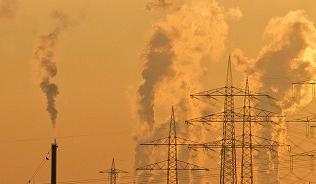This week, DEFRA closed submissions to its consultation on the long-term environmental targets set under the Environment Act. These targets will be a primary driver of action on environmental challenges over the next two decades, so ensuring that the framework is as strong as possible will be vital. As well as supporting the responses of other organisations, such as the Society for the Environment's Environmental Policy Forum, the IES has submitted its own response to the consultation, and IAQM has submitted its own response covering the air quality targets.
Read the IES response here.
What do the environmental targets cover?
The environmental targets set under the Environment Act address four core areas of the environment: air, nature, water, and waste and resources. In each of those areas, the Government is required to set at least one legally-binding target, as well as an additional target addressing PM2.5. The process for scoping, evidencing, and setting the targets began in 2020, before the Environment Act had passed into law, and has involved a considerable engagement process with stakeholders and experts. By October 2022, the targets must enter law through the legislative process, so there is only a small period of time left for the framework to be finalised in response to the consultation.
How has the IES responded?
In response to the consultation, the IES has engaged with members and other stakeholders across the sector to produce its own position on the target framework. While the full response provides explicit commentary on each of the targets, several themes emerged from the Government's general approach to the targets: ambitions must be raised significantly to meet the scale of environmental challenges we are facing, there is a lack of coherency between the targets and with existing targets, and targets have often been selected on the basis of an atomistic, rather than transformative, approach to change.
"If the extent of ambition under the target is to end with the same state ... as currently exists in 2022, the target will have failed to meaningfully improve the state of the natural environment."
Despite these concerns, there are still many positive elements to the proposed framework, which will support progress on a number of key environmental challenges. Critique of the targets must be focused to improve the final framework, and to ensure that the opportunity presented by the new targets is maximised.
A strong framework will reap dividends in the years to come, while a weak or poorly-designed framework runs the risk of unintended consequences and a failure to achieve the transformative level of change needed to address environmental challenges.
What next?
The consultation has now closed. DEFRA will review responses as it begins working to finalise the target framework. Once a final proposal is in place, it must be passed through secondary legislation which will make the targets legally-binding and enshrine them in law. Under the Environment Act, this must take place by the end of October 2022, so the Government has only a short period of time to take stock of the formidable response from stakeholders and the wider sector.
Regardless of the strength of the final target framework, there will be a role for environmental science to support the delivery of the targets, identify potential gaps in the framework, and ensure that environmental improvement is secured despite any gaps in environmental governance.





